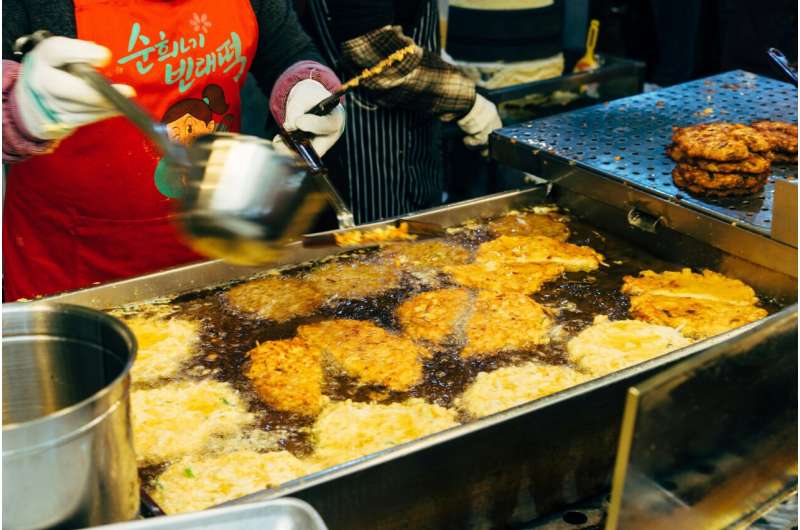Scientists cook pancakes, Brussels sprouts and stir fry to detect an oxidant indoors for the first time

A feast cooked up by UBC researchers has revealed singlet oxygen indoors for the first time. The work is in the journal Environmental Science: Atmospheres.
Singlet oxygen is an oxidant. These chemical compounds can be beneficial—ozone in the stratosphere is one example—but can also cause stress to our lungs, contributing to the development of cancer, diabetes, and heart disease in the long term.
Cooking foods can release brown carbon, molecules with the potential to create oxidants when they absorb light. In addition, has been linked to chronic diseases in chefs.
Historically, it was thought there wasn't enough light indoors to have much reactive chemistry, but there are many light sources in modern kitchens.
Sprouts + sunlight = oxidant
UBC researchers believed that if all the right ingredients were in place—namely, cooking in a lit area—they might find singlet oxygen indoors where it had never been detected.
They investigated by cooking three meals representing breakfast, lunch and dinner: pancakes, Brussels sprouts, and vegetable stir fry, sampling the air and exposing it to three different types of light: UV, sunlight, and fluorescent.
They detected singlet oxygen at around the same concentration for all three dishes. However, its highest concentration occurred in sunlit experiments, meaning naturally lit kitchens likely see more of this oxidant.
The COVID-19 pandemic has helped raise public awareness of indoor air quality.
The researchers recommend ventilation and air filtration in kitchens to reduce exposure to aerosols while cooking.
"Our next steps include determining just how this oxidant might affect humans and how much we're breathing in when we cook. Could it play a role in some cooking-related diseases?" said senior author Dr. Nadine Borduas-Dedekind, UBC chemistry assistant professor.
More information: Nadine Borduas-Dedekind et al, Singlet oxygen is produced from brown carbon-containing cooking organic aerosols (BrCOA) under indoor lighting, Environmental Science: Atmospheres (2024). .
Provided by University of British Columbia

















